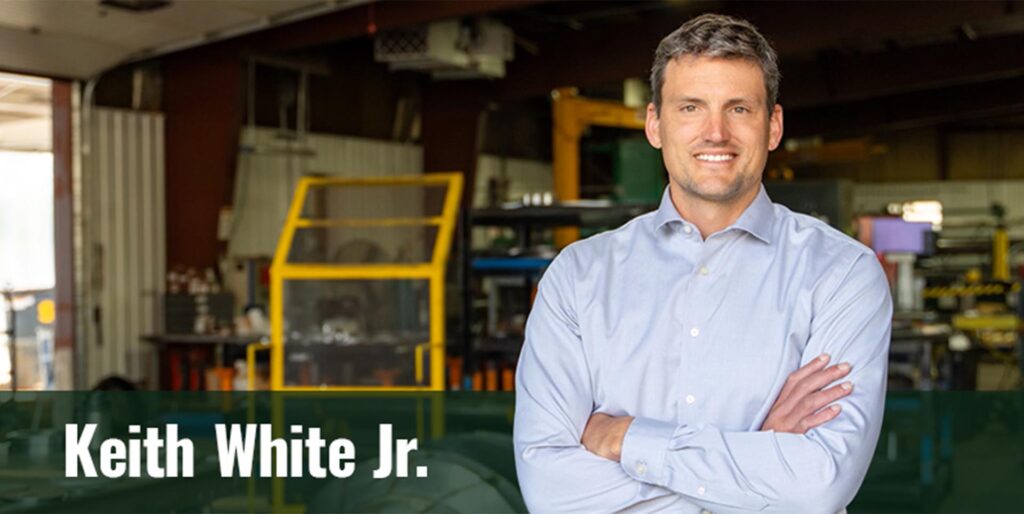Most of the fans we build are driven by electric motors, and this requires the fan wheel and/or shaft to connect with the motor shaft in some way. There are two broad classifications we use to describe this connection – 1) belt drive and 2) direct drive.
Welcome to the AirPro Blog
This installation features a high-pressure ID fan design with a shrouded and oversized impeller for an industrial dryer.
The Centrifugal Fan Basics
The most basic answer to the question, “What does a centrifugal fan do?”, is that it moves gas (air), drawing it into the inlet, turning it 90 degrees, and blowing it through the outlet to exit the fan. It moves a higher static pressure than an axial fan, which moves air and gas straight, in one direction. Without air movement inside buildings – whether a room (like in Chet’s example in the video), a house, or an industrial manufacturing facility – things would get dicey. If you were to be trapped in a small room with no ventilation, only breathing in your own exhaled air, you could only survive for so long. Imagine what would happen in a manufacturing facility where there are many other gases and particles at play! If that is all the information on centrifugal fans you were looking for, feel free to stop reading now. For a little more on how they work, carry on.
Our work at AirPro is not always about designing new fans; we often build replacement parts for all fan brands and send field service support teams to oversee installation and ensure the fans are ready for operation. We recently helped a minerals facility when their fan was damaged during operation. Our application engineers recommended replacement of the fan wheel and inlet cone and then our manufacturing team expedited production to provide the fastest delivery possible.
Our top manufacturer’s representative agencies like Air Quality Engineers (AQE) work closely with our application engineers to deliver reliable, high-quality centrifugal fans to customers for their industrial process applications.
Cargo Ship Application
We designed this induced draft (ID) fan to control emissions from cargo ships while in port.
What is a Balanced Fan? Think “Finishing the Job.”
A balanced fan must stay below specific vibration limits for safe operation while running at full speed. Excessive vibration will decrease the life of your fan and can lead to catastrophic failure.
With a focus on robust construction, we built a process fan on a combustion blower for an industrial heater application. This installation called for a backward curved blower with a direct-drive motor and an outlet damper with an electric actuator and positioner. We designed it with fewer parts to reduce maintenance in the industrial environment.
Fan Selection Considerations
We all know fans move air, but in industrial applications, they also move particles, parts, and even products. Both Mass Flow Rate (movement of materials) and Volumetric Flow Rate (movement of air) are important to know when calculating fan specifications and performance.
Why and How to Vary Speed in an Industrial Centrifugal Fan
A variable-speed fan is just what it sounds like. In this case, we’re talking about an industrial centrifugal fan that is capable of operating at more than one speed. That means it can run above or below the constant motor speed specified. There are several reasons why you would need a variable-speed fan, several ways to do it, and a few things to be careful to avoid when operating at varied speeds.
Radial Tipped Return Air Fan for Dust Collection
We built this radial-tipped dust fan for an air return application in a dust collection system. The fan has a 125 HP motor with roller bearings and a V-belt drive with the fan and motor mounted on a unitary base. We included a custom color coating to match the rest of our customer’s system.

Keith White Jr. Steps into President Role as Keith White Sr. Shifts to Board Oversight
We’re thrilled to congratulate AirPro Fan & Blower Company founder Keith White Sr. as he moves closer to retirement in the role of Chief Executive Officer focused on Board oversight, with Keith White Jr. stepping into the role of President as of July 1, 2023. The transition is the culmination of our years-long succession plan, with co-founder Marty Mathews retaining oversight of engineering and technology development.
Use a Damper to Add Resistance and Reduce Airflow
If you want to reduce a fan’s air volume and horsepower without adjusting speed, then you can use a damper to add system resistance. The damper can be installed on either the inlet or outlet side of the fan, and you can determine the best location based on your specific application and your fan performance curve. More often than not, we’ll recommend placing the damper at the outlet as the most cost-effective way to simply add resistance.
In this air pollution control installation example, we designed and delivered a heavy-duty fan for an OEM who designs and manufactures thermal oxidizers. This backward-curved induced draft fan is an arrangement 8 direct-coupled drive with a flexible coupling.

